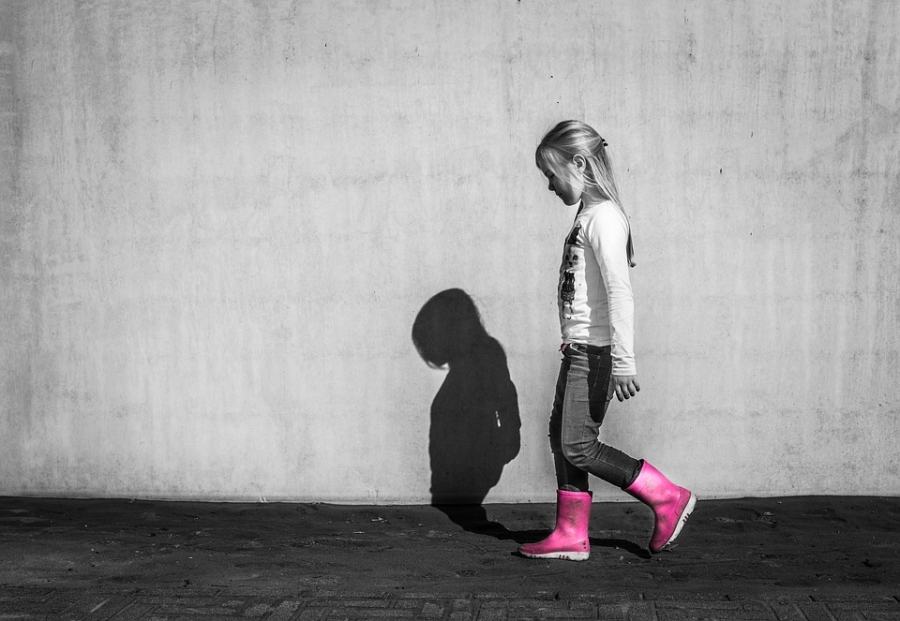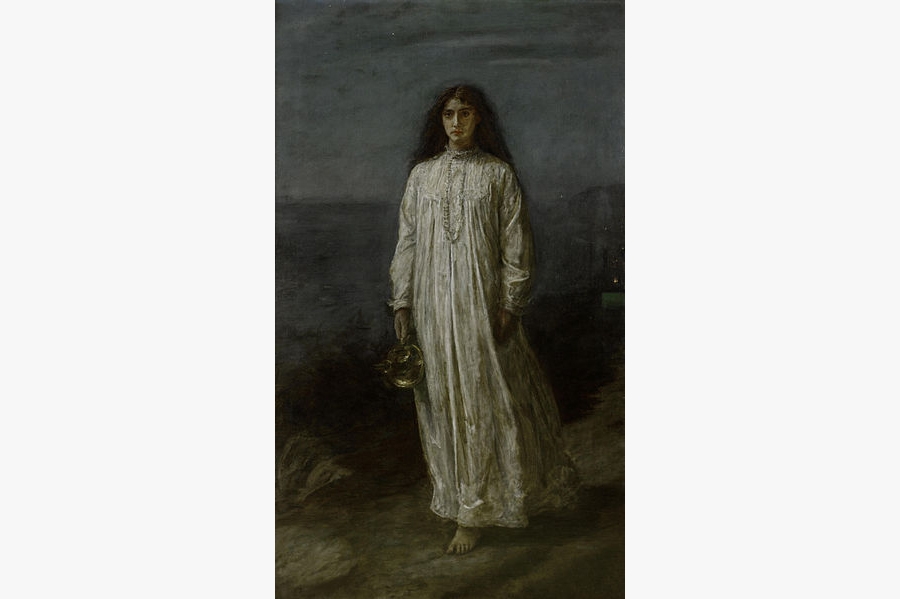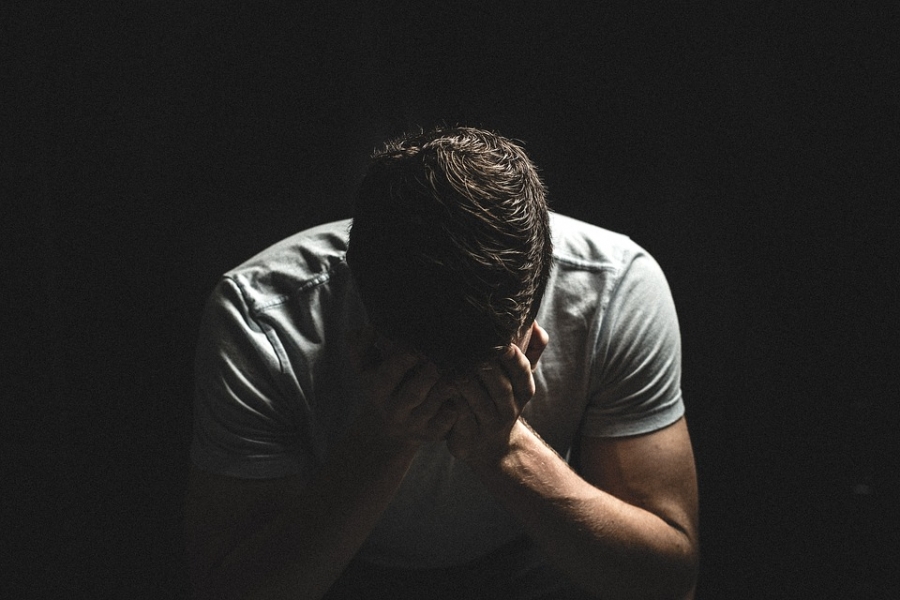Sleep has been considered by many as the best part of the day. Free from tension & a route for escape, from everyday monotony, it is certainly the cheapest and best way for refreshing oneself. In spite of the relaxed atmosphere, is sleep really a time when our whole body is at rest? The actual facts are much more complicated.
During sleep the consciousness level is diminished, most of voluntary muscles are not working and reaction to external stimuli are diminished. Normal sleep cycles consist of two different stages, which keeps on repeating itself. These two stages are, Rapid Eye Movements (REM) and Non-Rapid Eye Movement (NREM) stage.

NREM sleep comes before REM sleep, and consists of 3 different substages – N1, N2, N3 substages; the last of which is also known as slow wave sleep. After this non REM stage is over, it is followed by smaller duration of REM sleep. REM sleep is characterised by paralysis of the body & experiencing dreams (or nightmares). This 90 minute of average sleep cycle occurs repeatedly during sleep at night, with 4 to 6 such cycles, occurring during the entire night time.
Somnambulism or sleepwalking in common language, is a disorder of sleep, commonly seen during slow wave stage (N3 of NREM) of sleep. Changes occur in Brain during deep sleep, that is not sufficiently strong to wake up an individual, but powerful enough to put them hanging in a precarious position between sleeping and waking. Although their conscious memory & decisions making abilities are not working properly, but the mechanical functions of the human body, are maintained in a relatively normal state.
The person is involved in activities, which are generally done by individuals who are totally awake. Some of the recorded activities that the unfortunate patients, suffering from this disease have been known to engage in, are – sitting up from sleep, talking & screaming, walking around, drawing paintings, urinating in inappropriate places, cleaning or cooking, or even dangerous activities like – driving or murdering someone. The eyes usually stay open, with a staring appearance & but ability to answer questions are impaired.

However, when these people come to their senses, they usually do not have any memory of the activities, in which they indulged during their sleepwalking. In such situation, they are often confused and disoriented & may not give correct answers as how they, got out of the bed. These spells last for a period of 30 seconds to 30 minutes, almost always at night, during which their eyes remain open but carry a blank expression.
The cause of Sleepwalking still remains a subject of much speculations. However, different factors like – Lack of sleep, stress & anxiety, extreme tiredness, high fever, more duration of slow wave sleep & abnormality of nervous system, side effects of medications (benzodiazepines, antidepressants, antipsychotics and beta blockers) have been postulated as some reasons, which may contribute to sleepwalking. Sleepwalking is more commonly seen in children, with the incidence of almost 5% of children being afflicted with this condition, compared to only 1.5% of adults (however some studies give a much higher rate). The disease has also a hereditary component, with children of parents suffering from this disorder, being much more susceptible to become victims of this disease. However, environmental conditions also play an important role.

Certain other health conditions like - Parkinson disease & Alzheimer disease, may sometimes present with sleepwalking as an early sign. Night time asthma and convulsions, have been also observed to be related to sleepwalking. Menstruation and pregnancy, increases the frequency of the problem, in a woman having a history of sleepwalking previously. A child suffering from certain other varieties of sleep disorder like – restless leg syndrome or sleep disordered breathing, has more chances of developing sleepwalking later in life. Sometimes adults suffering from some mental disorders like – Schizophrenia, anxiety disorders, hysteria or Tourette syndrome have a higher incidence of sleepwalking.
There are two subcategories, which are based on major accompanying symptom, present in these sleepwalkers. These 2 varieties are –
The people involved, eat food during their episodes of sleep walking, which many times they even prepare themselves. As must be obvious, these people are prone to injury, during cooking of these meals. They also have an increase in weight, due to consumption of excess calories. This variety is seen in people, who are exposed to severe stress. Some medications have also been implicated as responsible for this problem. Paradoxically, one of the commonest medications associated with this problem is a drug called – Zolpidem, which is used for short term treatment of sleeplessness or insomnia (in medical parlance).

This variety of sleepwalking is associated with carnal activities. The person concerned, engages in sexual acts during the NREM stage of sleep, and is totally oblivious of the facts, later on - when they are awake. This situation becomes more complicated, in light of the fact that, the person concerned appears totally awake during this whole misadventure. This creates a difficult situation in cases of sexual assault and rape, where defence counsel cites, medical health problem of Sexsomnia as a defence plea for the accused.
1) One of the most common myths involved with sleepwalkers is that, they should never be woken up during these episodes. Many believe that waking up these individuals, can be harmful for them as the shock can give them a heart attack. Unfortunately, the truth is the other way around. Although it is difficult to wake up a sleepwalker (who may be confused or disoriented, after coming to senses), but a sincere attempt to do so should be tried gently, so as to avoid any inadvertent injury to the person involved or other people present nearby. However, caution should be exercised while waking them up; as being in a disoriented state, they can hit out at the other person present or may sometimes inflict injury to themselves, in that transitional phase.
2) Unfortunately many people in backward pockets, of 3rd world developing nations, also associate this medical disorder with demonic possession and other paranormal activities. Popularity of certain Hollywood horror movies, in recent years have enabled these superstitions to transcend geographical boundaries & traverse financial barriers.

3) Even in developed countries of Europe and Americas, people confuse between alcohol induced blackouts and sleepwalking, which superficially has some common characteristics. Engaging in activities like driving a vehicle, talking & amnesia for events, later on may be seen in both the situations. Both the conditions can lead to grievous dangerous injury, including death.
4) The sleepwalking patients, do not suffer any physical effects or handicap during the day, because of their nocturnal activities. The reason for this is due to the fact that, sleepwalkers are still in sleeping condition while sleepwalking, hence no residual physiologic impairments are produced.
5) Many people believe that children suffering from the problem, would continue to face the predicament throughout their life. However, majority of the children grow out of their sleepwalking phase. Only a few suffer the problem throughout their life, transferring the disease to the next generation.
Although it is by the description of parents, partners & self, that most of the cases of sleepwalking comes to attention; but Polysomnography as an investigative tool, gives an accurate assessment of the problem. This diagnostic tool is used for sleep study, and records the biophysiological alterations that happens during sleep. This study, usually done at night, monitors brain and muscle activity, eye movements, heart rhythm and respiratory function occurring during sleep.

Unfortunately, the treatment modalities devised for the condition, are not always satisfactory or clinically proven. The end result is that there is still no specific treatment for the mentioned condition. In spite of reservations of many experts, who are sceptical about the end results, three main modalities are commonly used for the improving the condition. These are Psychologic treatment, medicinal therapy and lifestyle alterations (probably the most effective method).
There are many medicines used for the condition & they include drugs of many different classes. Clonazepam, diazepam, triazolam, imipramine and flurazepam of Benzodiazepines (sedative, hypnotic & anti-anxiety medications) group of medications are very commonly used. Antipsychotics, antidepressants, antiepileptics & anticholinergic drugs have also been used, with differing levels of success. If sleepwalking is associated with some underlying disease (Sleep apnoea, Gastroesophageal reflex, convulsions & restless leg syndrome), they should be judiciously treated.
Care should be taken to prevent harm to the effected individual and those near and dear to him, during sleepwalking episodes. Avoiding sleep deprivation, by increasing duration of sleep, has been found helpful in some cases. The same result was also seen by avoiding alcohol before bedtime & certain other medications. Simple precautions like keeping dangerous weapons like – knives and firearms, out of reach of the patient & equipping the house with door alarm and locking the gates, can help prevent many unfortunate accidents.
Many different methods have been tried by different people, giving different variable results. These are various and range from innocuous appearing – hypnosis, psychoanalysis, improving sleep hygiene, play therapy, controlling aggressive emotions, relaxation training; to more aggressive measures like – electric shock for classical conditioning.

Sleepwalkers have many times got embroiled in situations, that have pushed judgemental abilities of people concerned to the extreme. The reason for this, often stems up from finding a way to treat the difficulties faced by the patients (yes, they certainly have an illness & deserve an empathetic attitude), while addressing the difficulties, created by the sleepwalker, for the people around him/her.
Some of the inadvertently produced deleterious problems, which may be faced by sleepwalkers are – injury, assault, offence of sexual nature and the ultimate offence of, causing death of someone else. The family of the individual concerned (both the patient & the victim), society as a whole & finally the law of the land, always find themselves in a precarious situation, regarding the most logical & rational course of action in such situation. Given below, are some real-life situations, that were created as a result of aforementioned sleep disorder.
Famous as the first case in American legal history, where an emotional defence plea of sleepwalking saved a murder accused from, going to the gallows. Albert Jackson Tirrell, a married man from Massachusetts, left his wife and children to live with a prostitute – Maria Bickford. Later Tirrell killed the woman & set fire to the brothel in Boston, where she lived. His lawyer was successful in his attempts, to prove to the juries present that, Albert Tirrell was a sleepwalker & all the incidents were done by him, under the influence of his health problem. Tirrell was allowed to go scot free.
A man sleeping in lobby of a hotel, shot 3 times a porter, who was nudging him, to wake him up. Later the shooter was apprehended, and was charged with murder. However, a history of sleep deprivation before the incident, along with a lifelong history of sleepwalking, saved the life of the accused.
The Texas man had shot his mistress in the night, by a pistol, placed under his pillow. The justification of keeping a firearm, under his pillow, before going to sleep was due to a real-life threat, that he was anticipating previously from another person. A noise in the night, made him to get out from his bed and use the firearm. The explanation of using the weapon, in his sleep walking condition, without being aware of what he was doing, made the jury take a sympathetic stance in his favour.
The young man from Canada, reportedly drove 20 kilometres in sleep, after getting up from his bed, to reach his in laws house. He entered the house, with a key, that his in laws had previously given him. After entering the house, he used a tire iron to repeatedly hit his mother in law & strangled his father in law. However, the father in law barely survived, but the mother in law was not so lucky. After this gruesome incidence, Kenneth Park went to a police station in a confused condition & acknowledged his crime. The fact that he was oblivious to the damaged tendons in both of his hands & the resulting pain, along with a family history of sleep disorder, made the authorities believe, that he did not have any nefarious intention, hence was proven - not guilty.
A Swedish man was acquitted from rape charges in year 2014, as he was believed to be suffering from the sleep disorder of Sexsomnia. Mikael Halvarrson was alleged to have raped his girlfriend, who was sleeping beside him, on April 2, 2014. The police after arriving in the morning, found the accused still sleeping in the same bed.

Similar pattern of behaviour in the past, as mentioned by an ex-girlfriend, along with the history of the accused suffering from disturbed sleeping pattern, as mentioned by his mother, convinced the court authorities, that the accused was innocent, as he was sleeping at the time of the incidence & hence not responsible for his behaviour and action.
The ability to treat patients, without morally judging them, is an integral part of a Doctor’s daily job. However, when a third party gets involved in the situation, then it no longer stays a health issue only. A health problem with a social stigma, along with associated complicated legal issues attached to it can be a really difficult situation to handle. However, a patient and balanced approach from all the people involved, along with a well-informed judiciary has brought, justice and balance to the life of many unfortunate people, who landed in a difficult situation as result of suffering from this disease. However, sleepwalking as a health problem is still misunderstood & also misinterpreted by majority of the population. Hence this article was written, with the aim of raising awareness & evoking empathy in the people reading it.
(Disclaimer – This article is just for raising awareness about some of the sleep disorders, that affect mankind. It is certainly not a substitute for a direct consultation with health professionals, for the individuals who need it. Moreover, the legal status regarding sleepwalking may vary from country to country, reader’s discretion is advised.)